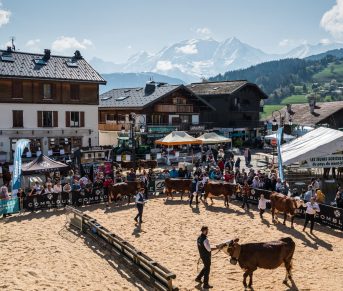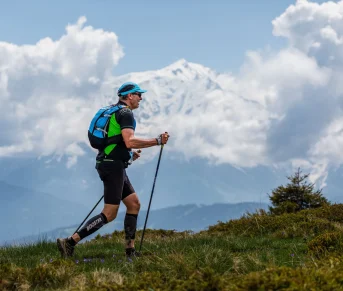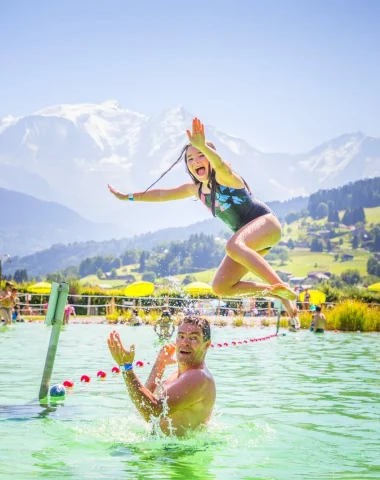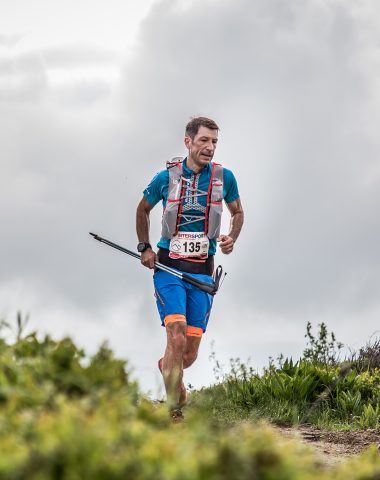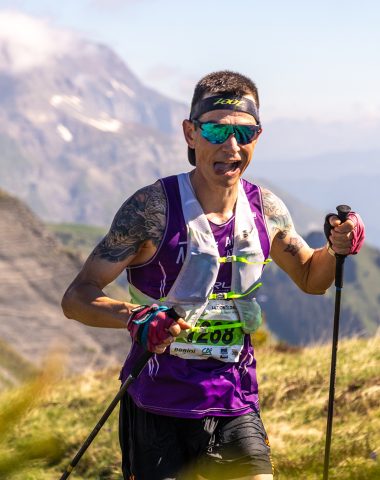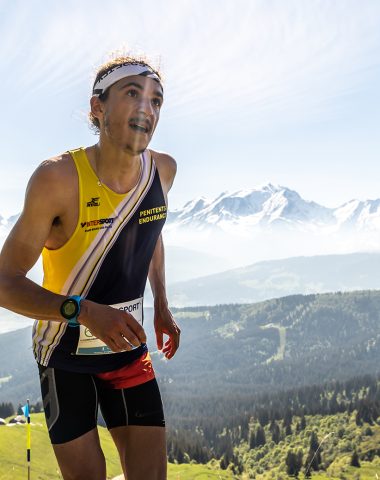You are registered for the Comblorane trail, you have trained for several weeks and you are now wondering: how to best manage your race and have a good recovery after the effort? We give you our advice!
It's the big day: our advice for managing your race!
Do not forget the warm-up to start on the right foot
That's it, race day has arrived! After several weeks of preparation you arrive on site. It's time to start the last part of the pre-race preparations: the warm-up.
The warm-up allows you to prepare your body for the race in order to be more efficient and to limit the risk of injury. The goal is to awaken and warm up your muscle groups without expending all your energy. For this, it is recommended to run with a low intensity for a period of 10 to 15min and then to do light stretching. Be careful never to reverse the order, cold stretching is not recommended for risk of tearing.
The warm-up should not be too intense. If you feel your heart rate increasing too much and you're out of breath, you're going too fast.
In order not to lose the benefit of the exercises, keep your body warm and do not leave too much time between preparation and the start of the race. Finally, just before the start, wake up your reflexes with a few exercises putting pressure on your supports and increase your heart rate with rapid accelerations.
Manage your effort
The start of the race has just been launched and you are in the middle of a crowd of trail runners. At first it is normal for the density of runners to be high, but don't worry, the gaps will quickly widen and you will be able to run at your own pace.
Above all, be careful not to get carried away and set off at a pace that is too high and unsuitable for your abilities. In each trail, there are very experienced runners who will leave at the quarter turn. It is at this time that you have to be careful to respect your race plan.
Warning: If you feel that you have overestimated the speed of your progress, it is better to slow down otherwise you run the risk of putting yourself in the red and not being able to finish the trail. Better to go slow but enjoy the experience!
refuel
As for a marathon, refueling points will be set up. The latter are spaces offering water and food. It's time to recover the water and energy lost during the first kilometres. Of course, taking the time at the refueling point is synonymous with a short stop, but this stop is essential. The energy recovered will make the difference over the next few kilometers and it may be thanks to the latter that you will be able to finish the race or gain a few minutes!
Note: do not drink too much at once. It is advisable to drink only a few sips at a time.
The end of the race, where the mind takes over
Whichever race is selected, the end of the race will be a physical and mental test. At many times it is possible to feel exhausted, tired, out of breath. It is in these moments that you should not hesitate to slow down the pace a little.
Walking on a trail is an integral part of the event. There are even uphill parts where almost every participant will have to walk so as not to get into the red because of the elevation. So don't hesitate to catch your breath and slow down the pace to start again with renewed vigor.
If you are looking for performance, then you will also have to rely on your mind not to let go. A successful race means finding the right balance between effort and rest to achieve the best possible time according to your abilities. It is also for many to have the satisfaction of finishing the course whatever the final time!
After the race: recovery
regain strength
The finish line is crossed, the trail is over and you have well deserved the congratulations of those around you. The first advice we can give is simply to savor this moment, share discussions with other trail runners, become aware of what you have just accomplished!
After such an ordeal, you must above all listen to your body. He will naturally ask for what he needs, probably water, rest and food. Remembering to drink a lot is essential in order to rehydrate your body and eliminate the waste accumulated during the race. It is possible and advisable to use a recovery drink which, in addition to hydrating, will provide carbohydrates and proteins.
On arrival, you will also have a stand with something to eat and drink. An assortment of various resources will be available to regain strength.
Finally, a good restful sleep will do you the greatest good.
Muscle Recovery
The muscles, especially the legs, worked a lot during the course. To limit aches, do gentle stretches for the whole body, working mainly on the lower part. The exercises carried out must not be too violent at the risk of injury.
If on arrival you feel particular pain, go to a health and sports professional to avoid the risk of aggravating a potential injury.
Getting back to training slowly
After a trail, it is necessary to observe a recovery period during which the body will rebuild its reserves, rebalance and rest. This step is fundamental! Depending on the distance covered, the age and the state of form, this period will be more or less long. As an indication, after the 25km the estimated rest period is 5 to 8 days and for the 38km 8 to 15 days.
During this period, you must first rest and then slowly resume sports activity, at low intensity, with short outings. Remember not to make prolonged effort, not to increase your heart rate too much and preserve your joints.
Themes















